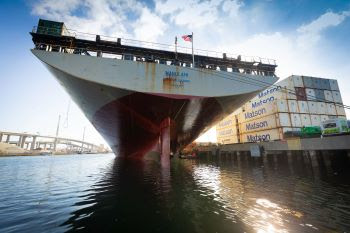
Cargo volume dips in July at Port of Long Beach
Summer lull continues amid shift in consumer spending
Trade dipped at the Port of Long Beach in July due to adjusted trade routes, full warehouses and a shift in consumer spending to travel, entertainment and other experiences.
Dockworkers and terminal operators moved 578,249 twenty-foot equivalent units (TEUs) last month, down 26.4% from July 2022, which was the Port’s busiest July on record. Imports declined 27.9% to 271,086 TEUs, while exports decreased 17.6% to 90,134 TEUs. Empty containers moving through the Port were down 27.7% to 217,030 TEUs.

Mario Cordero
“I am confident we will see our numbers improve as we work with industry partners to rebuild our market share,” said Port of Long Beach CEO Mario Cordero. “Looking ahead in the near term however, we anticipate a modest ‘peak season’ for shipping as consumers spend a little less this year on back-to-school supplies and gifts through the holiday season.”

Bobby Olvera Jr.
“Our facilities, longshore labor, marine terminal operators and all of our industry partners continue to make this the premier gateway for trans-Pacific goods movement,” said Long Beach Harbor Commission President Bobby Olvera Jr. “We are ready for a rebound in cargo volume based on our ability to move cargo reliably, quickly and sustainably.”
The Port has moved 4,310,925 TEUs during the first seven months of 2023, down 25.6% from the same period last year. Cargo flows are now closer to pre-pandemic levels, when the Port of Long Beach moved 4.3 million TEUs through the first seven months of 2019.
For complete cargo numbers, visit polb.com/statistics.









